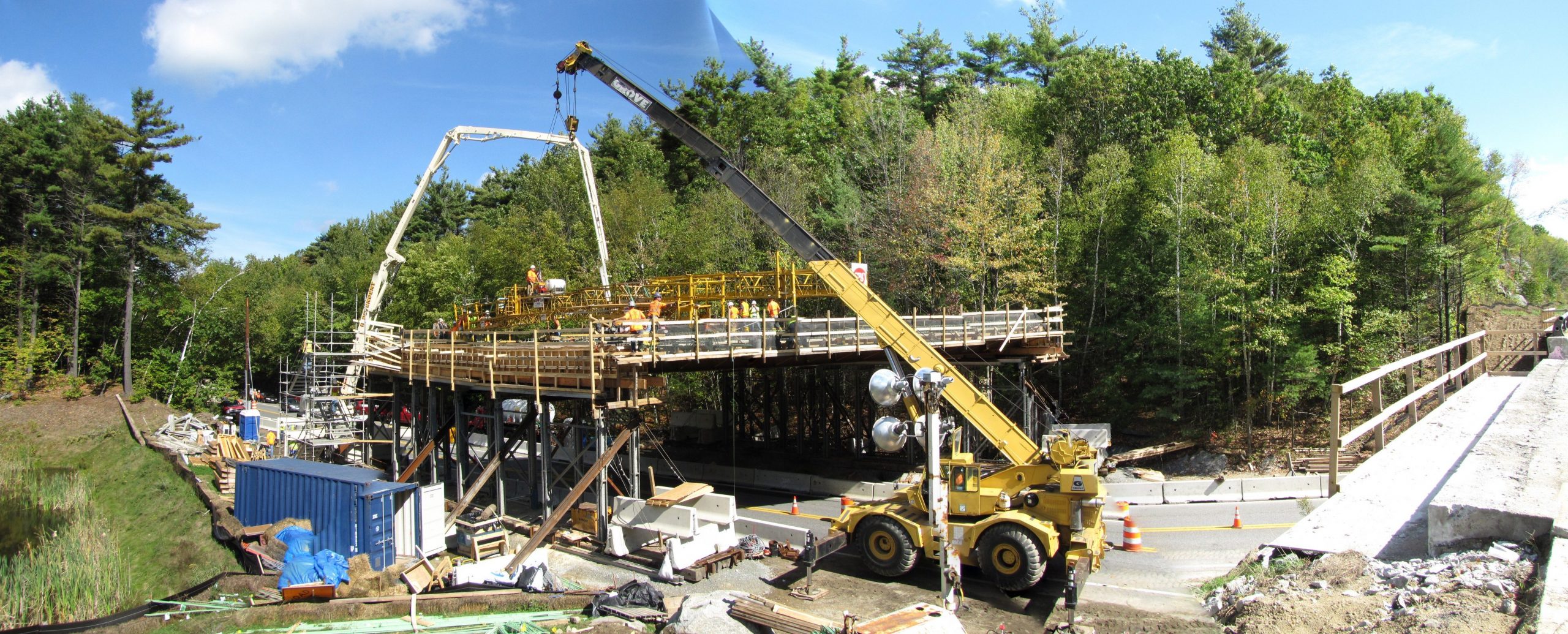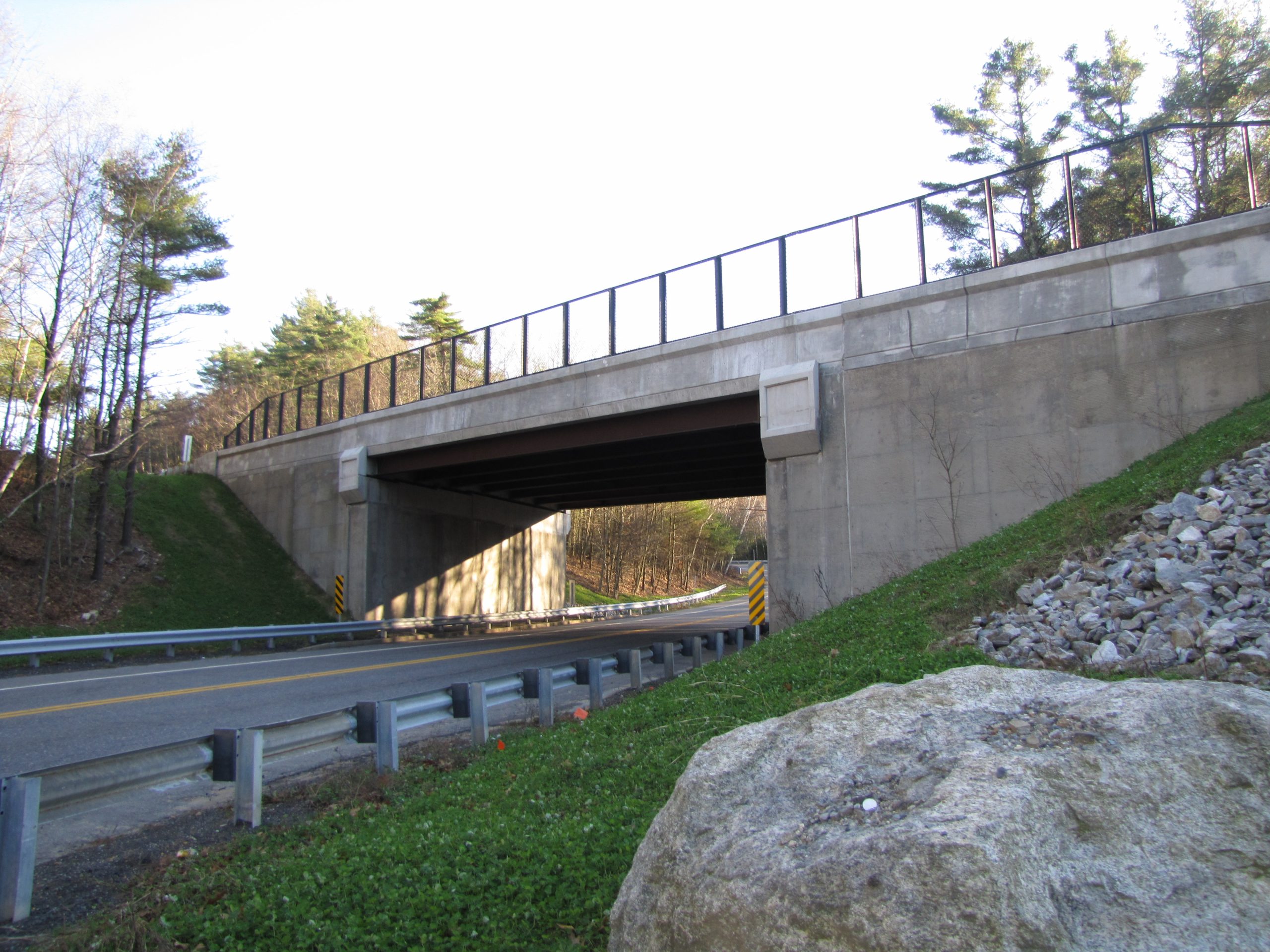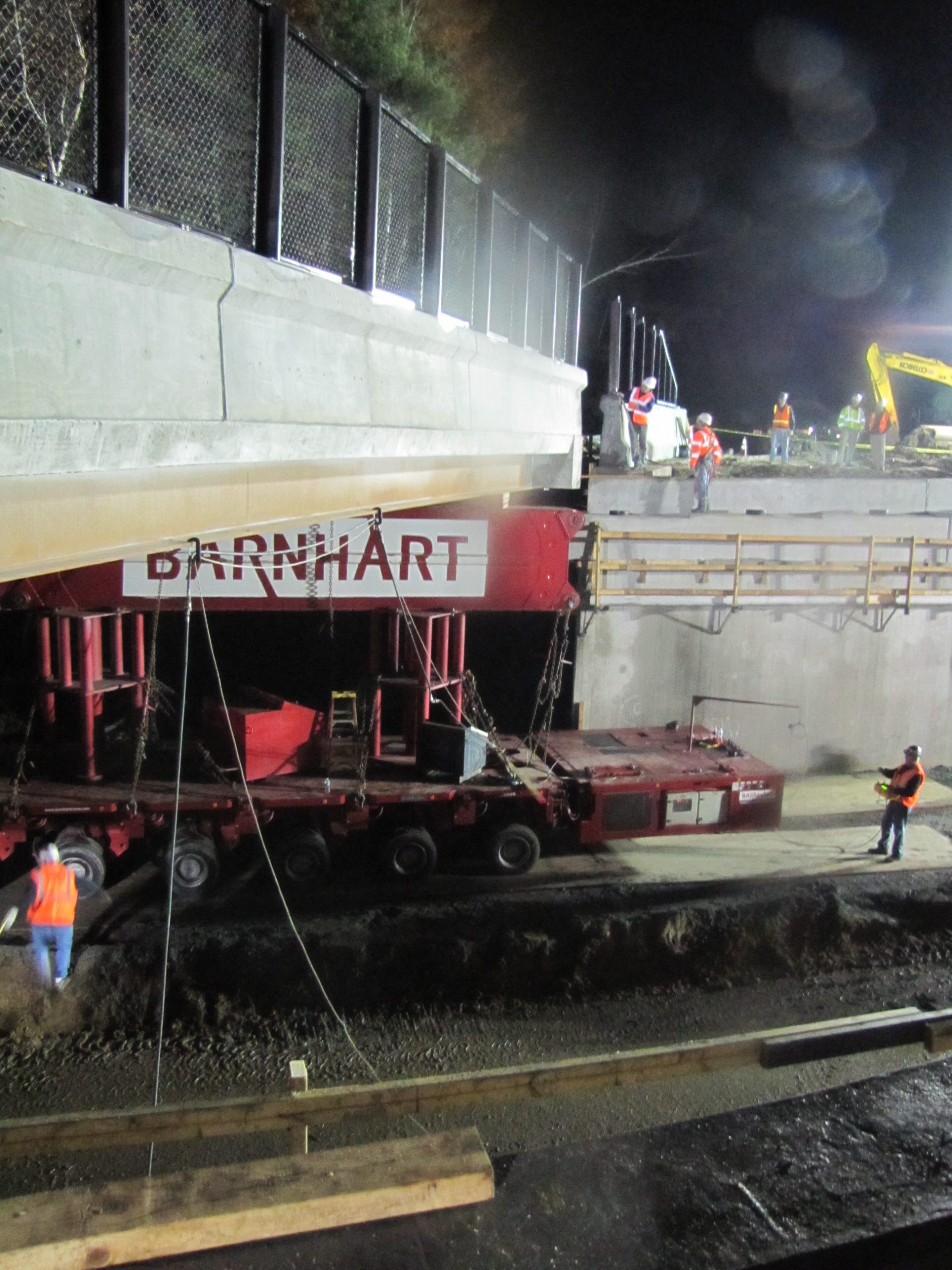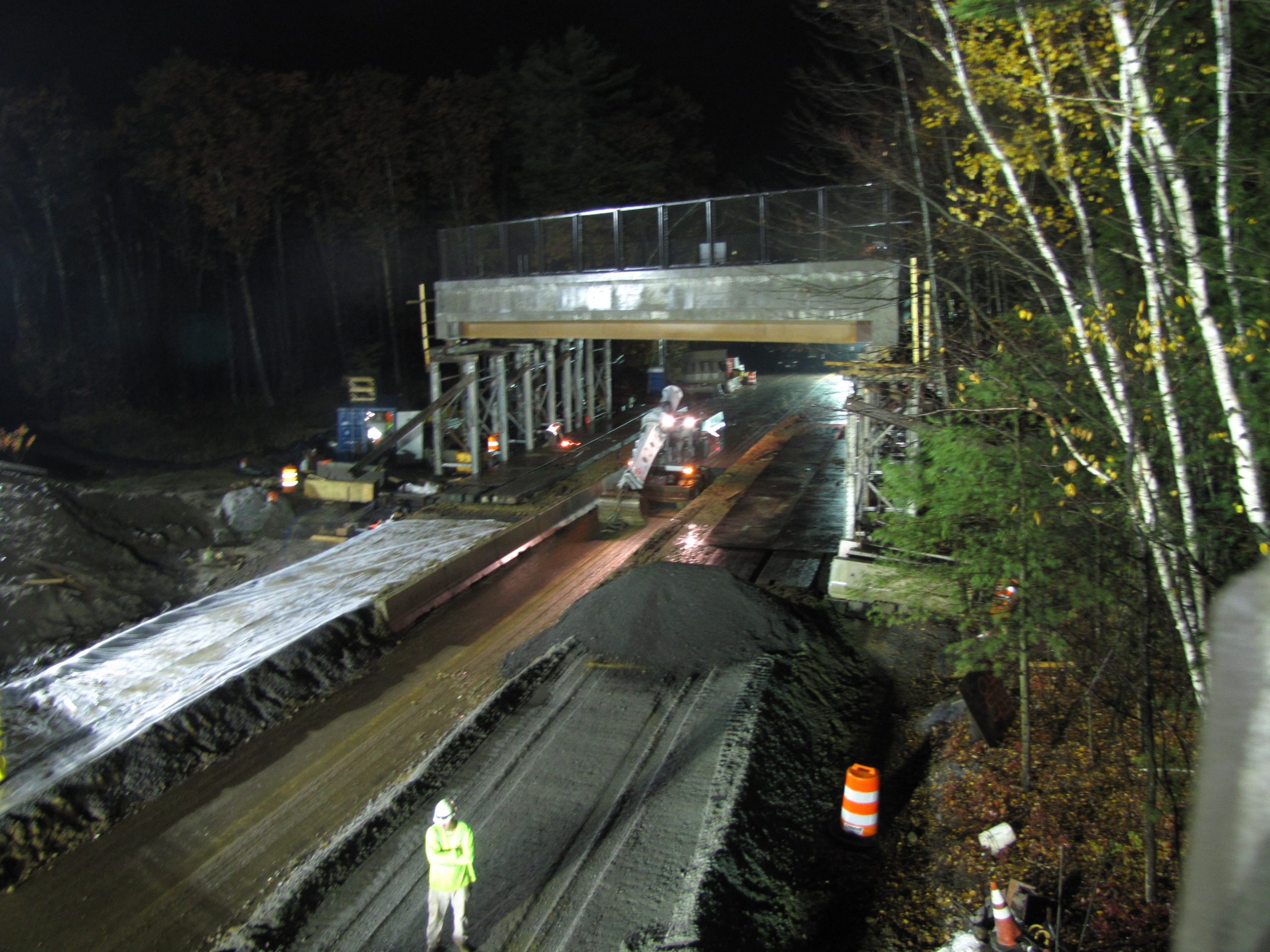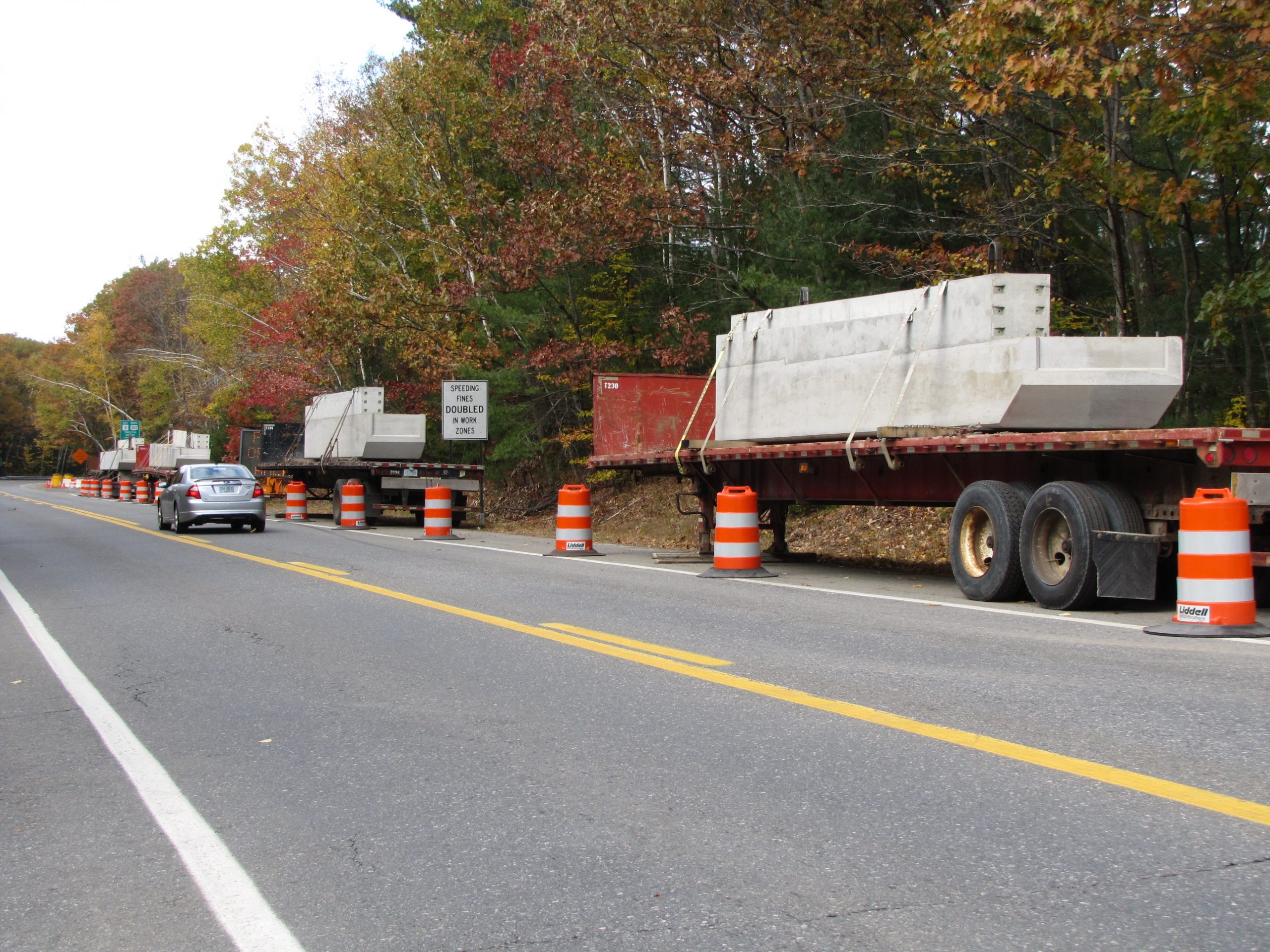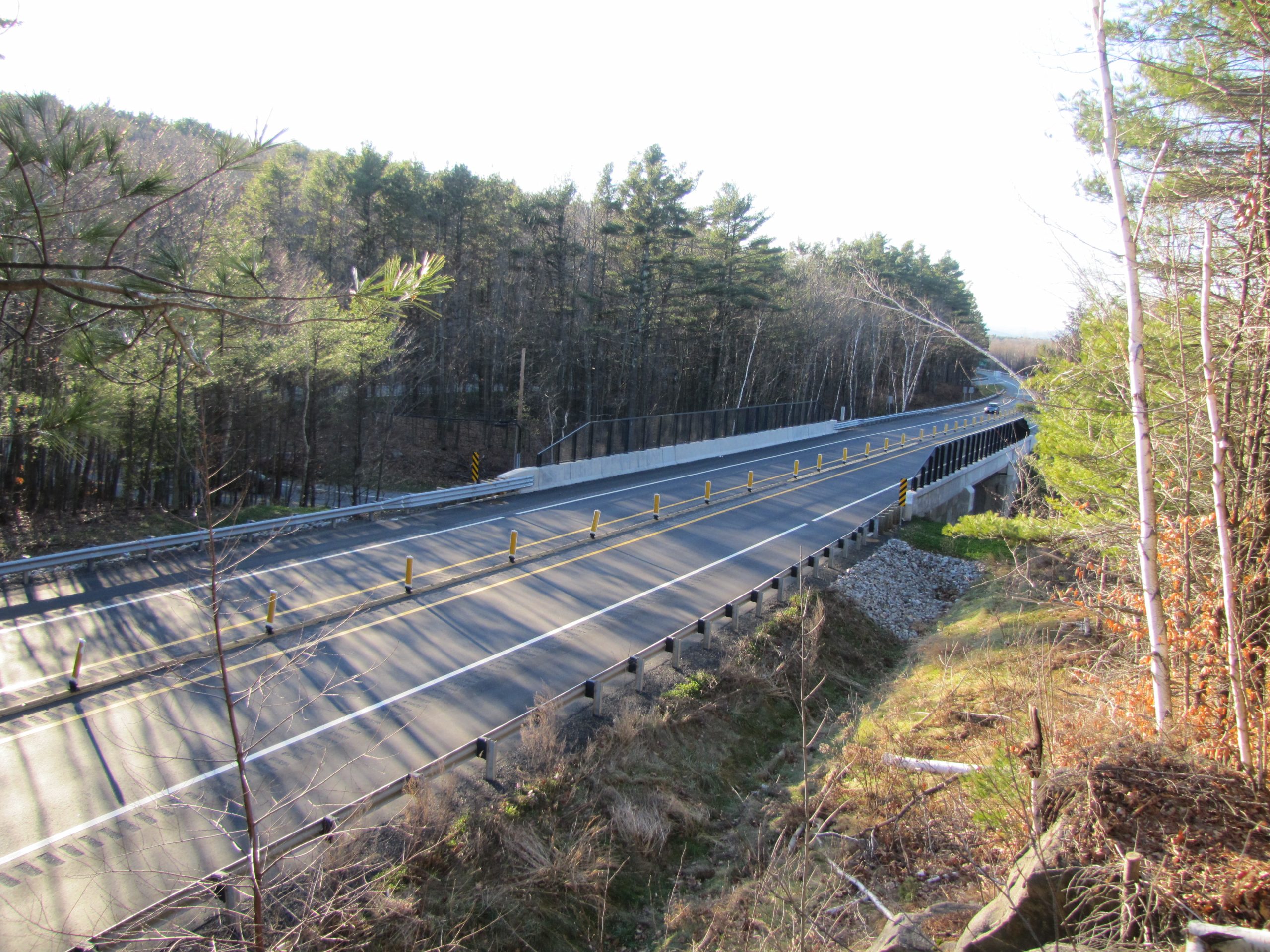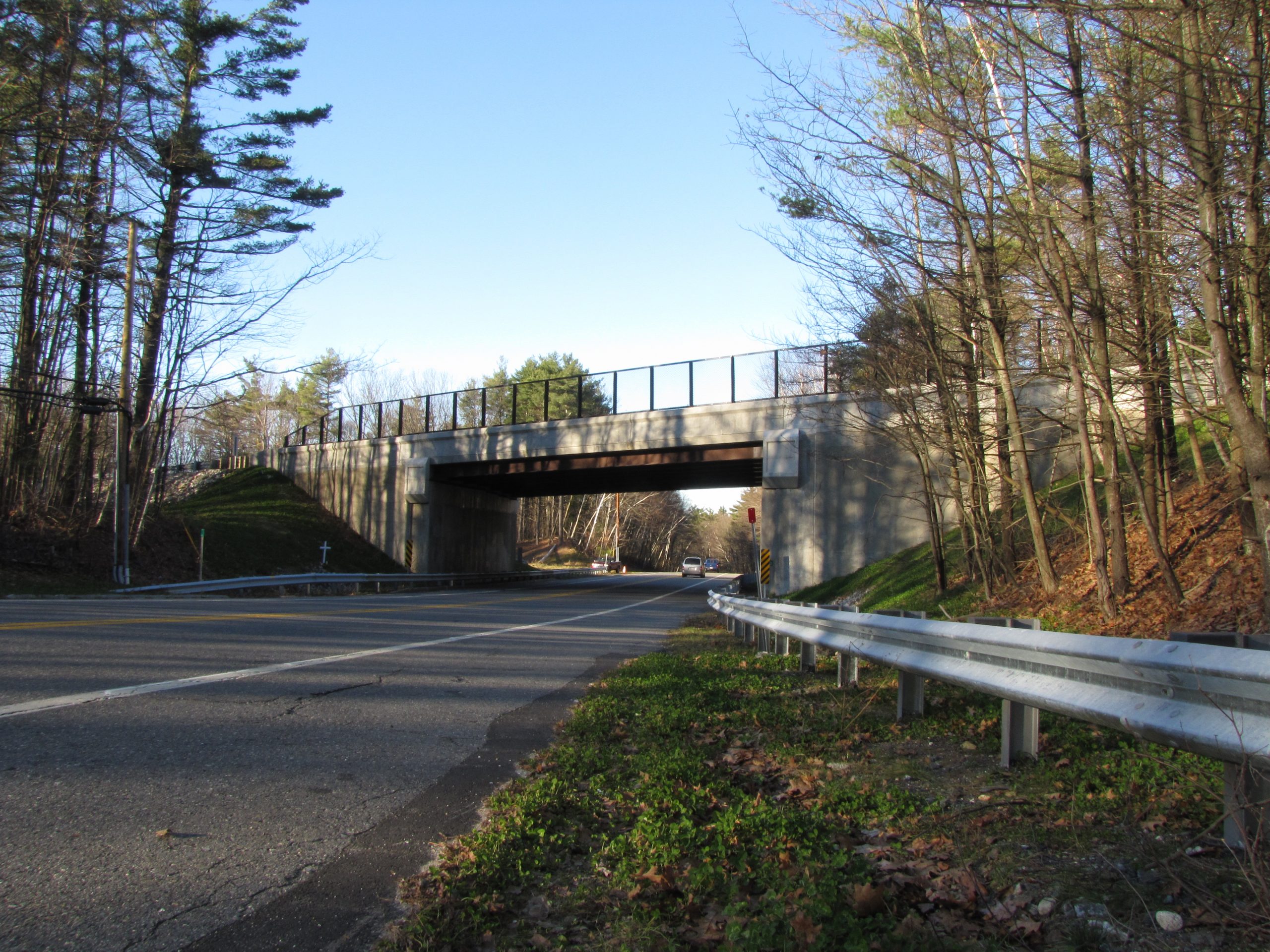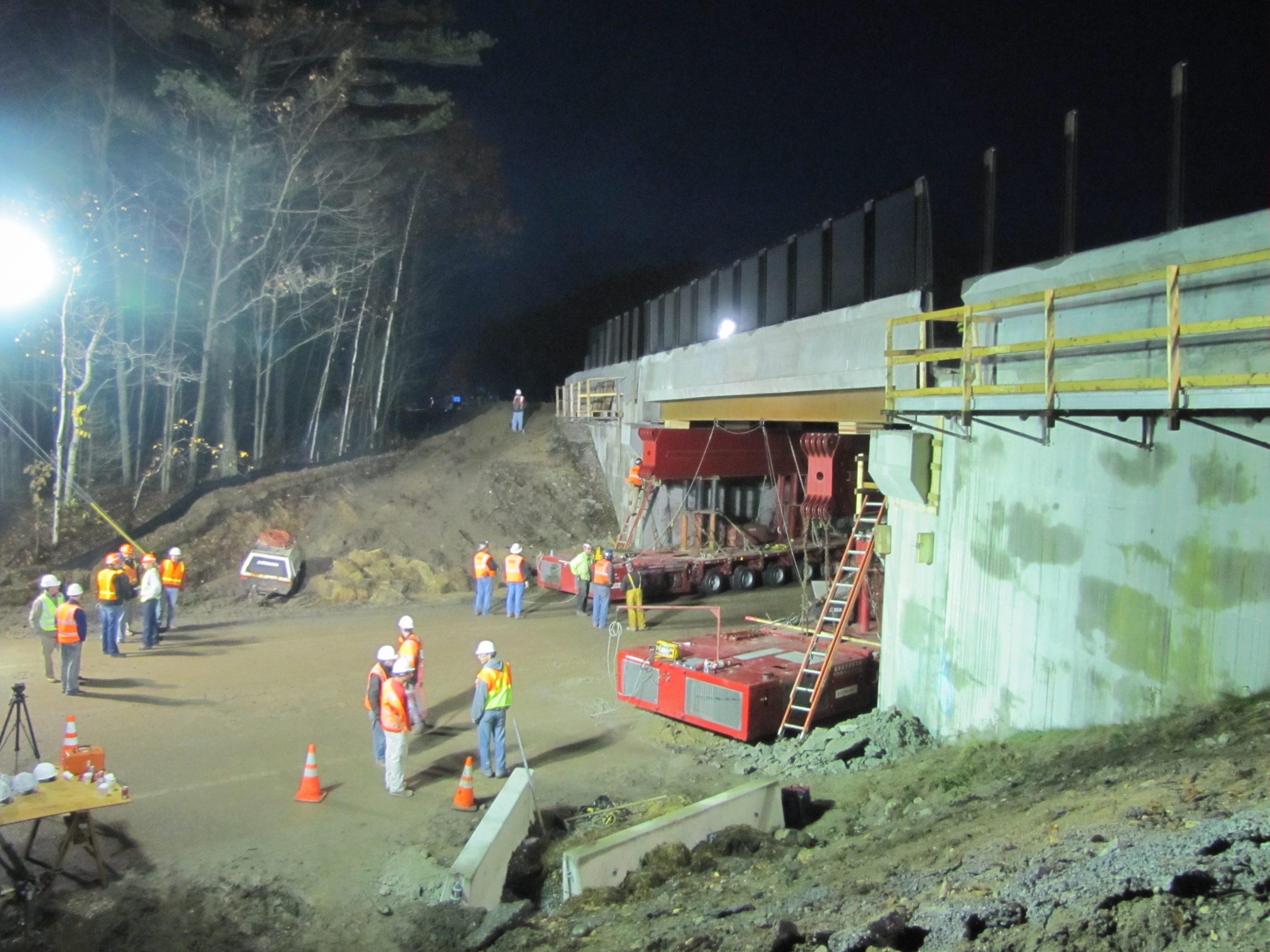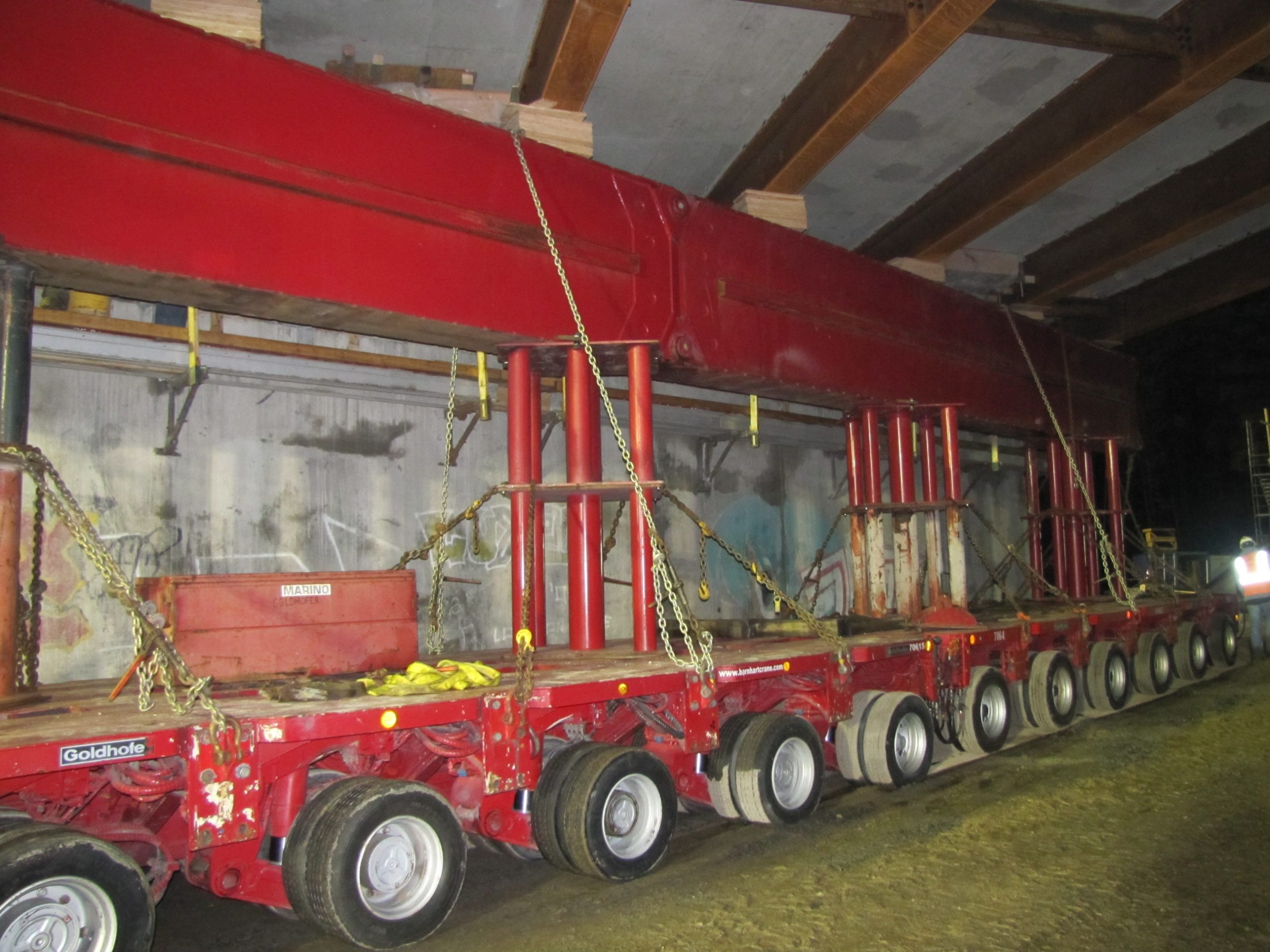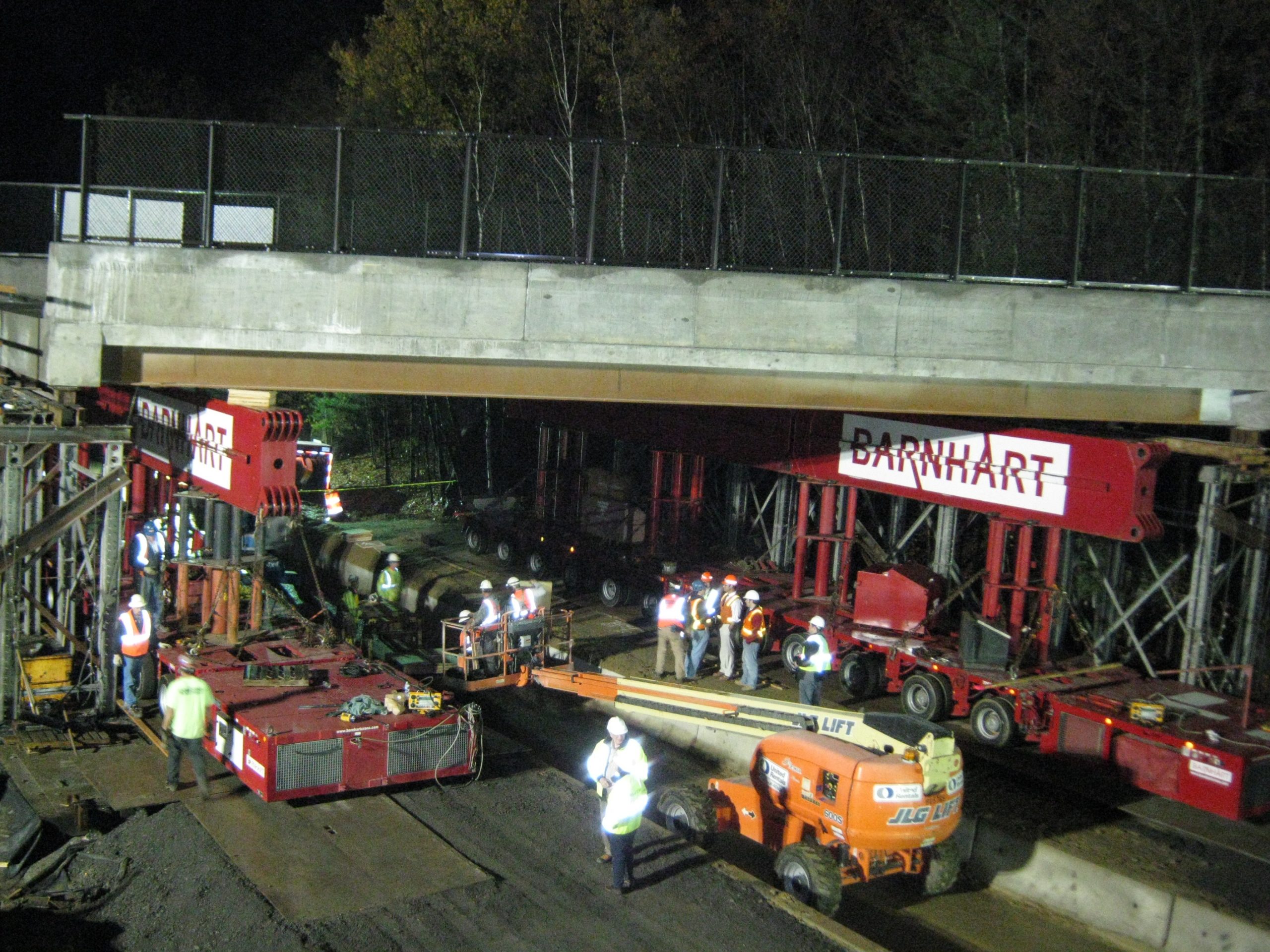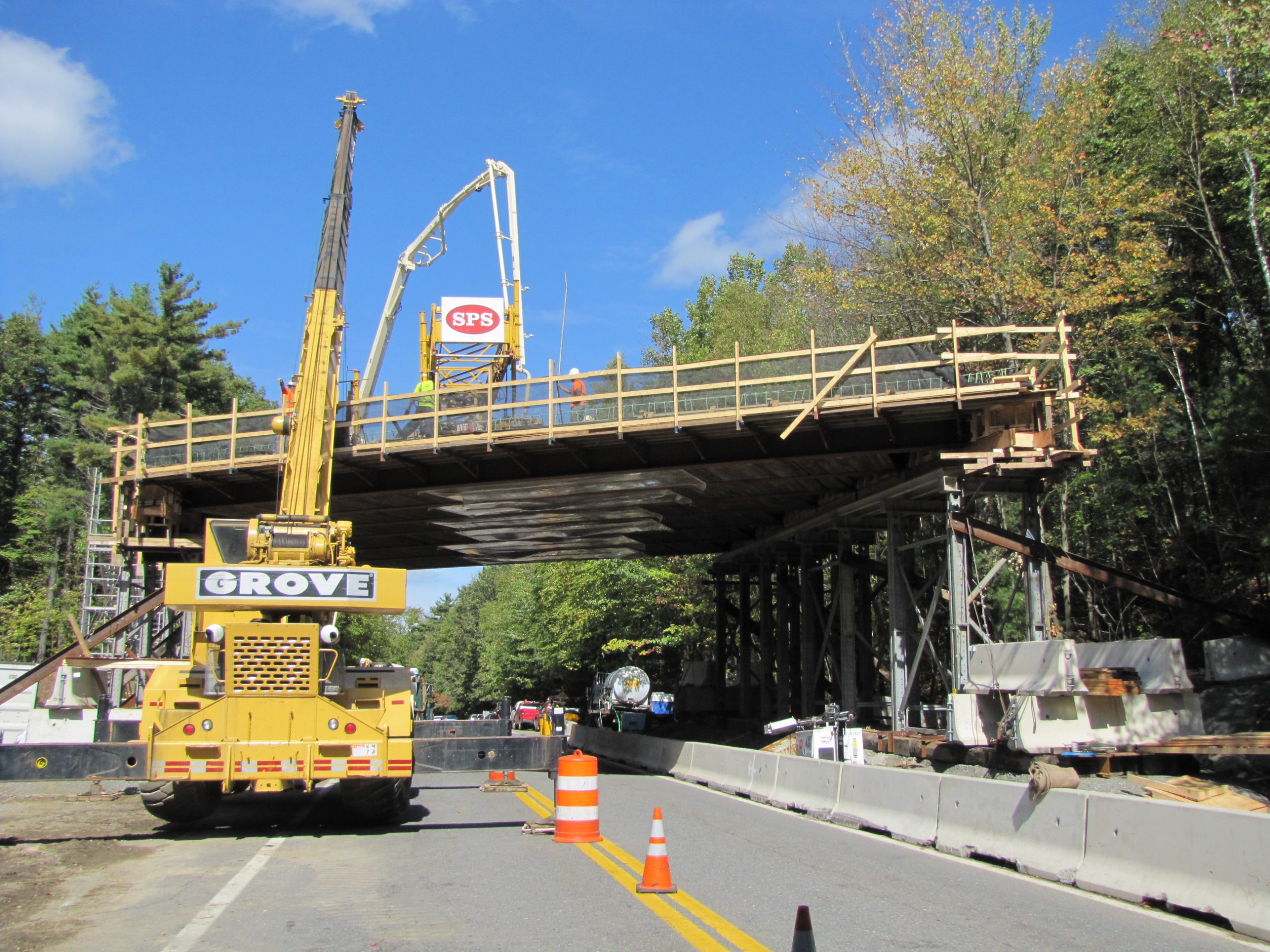State: MA
County:
Owner: State
Location: Urban
Spans: One-span
Beam material: Steel
Max Span Length (ft.): 60.67
Total Bridge Length (ft.): 60.67
Construction Equipment Category: SPMTs
ABC Construction Equipment: SPMT(s)
State ID Number: P-09-004-19B-DOT-NBI
NBI Number: P0900419BDOTNBI
Coordinates
Latitude: 42.5767326 | Longitude: -72.1711731
Bridge Description
Project Summary:Project Location:
MA Route 2 / US 202 over MA Route 2A (State Road) in the town of Phillipston in Worcester County, approximately 65 miles northwest of Boston
Impact Category:
Tier 3 (within 2 weeks)
Mobility Impact Time:
ABC: Five days (121 hrs); Conventional: 14 months; two construction seasons
Primary Drivers:
reduced traffic impacts; reduced onsite construction time; improved work-zone safety; improved site constructability; improved material quality and product durability; reduced life-cycle cost
Dimensions:
60.67-ft-long and 50.67-ft-wide out-to-out single-span steel girder bridge roll-in; 30º skew; 245-ton self-weight
Average Daily Traffic (at time of construction):
19720
Traffic Management (if constructed conventionally):
Traffic management alternative, if constructed conventionally: 3-staged construction over multiple construction seasons
Existing Bridge Description:
Built in 1959, the existing two-lane steel girder bridge was structurally deficient and, due to its low vertical clearance, was damaged by truck collisions. Its superstructure required replacement, but its abutments could be (and were) reused.
Replacement or New Bridge:
The bridge has two 12-ft-wide traffic lanes, one in each direction and divided by a 7-ft-wide median, and two 8-ft-wide shoulders. The cross-section consists of seven 2.1-ft-deep steel girders (W24x146) at 7.75-ft spacing, with an 8-inch-thick composite cast-in-place concrete deck. To avoid future truck collisions, MassDOT increased the bridge’s vertical clearance to 16.5 ft. The precast abutment cap/backwall units were founded on the existing abutments.
Construction Method:
The contractor built the replacement bridge on temporary shoring towers just north of the old bridge, spanning Route 2A. The shoulders of Route 2A were restricted from the time the temporary supports were installed (in June) until they were removed (in November). During this time Route 2A travel lanes had intermittent day-to-day restrictions involving one-way alternating traffic under police control during work hours, with both travel lanes restored at the end of the work day. After the replacement superstructure was completed, Route 2 and Route 2A traffic was detoured. Route 2 traffic followed a short detour around the work zone using eastbound off- and on-ramps which were temporarily widened. Route 2A traffic was detoured onto exits to the west and east. The contractor demolished the old bridge superstructure and upper portions of the abutments. The contractor drilled and grouted 32-inch-long #5 dowels, double row spaced at 22 inches, dowels spaced in each row at 2.24 ft on-center and embedded 15 inches into the existing abutments. The precast abutment cap/backwall with 2-inch-diameter sleeve was erected over the dowels, and the sleeves were grouted. Elastomeric bearings were set. The bridge was then moved into place using self-propelled modular transporters (SPMTs). A 1.5-inch hot-mix asphalt surface course was placed over a 1.5-inch thick hot-mix asphalt protective course which was placed over membrane waterproofing. The bridge and Route 2A were then reopened.MassDOT allowed 202 hours of traffic detours for the bridge move. The contractor completed the work ahead of schedule, in 121 hours; the bridge was reopened in just five days. Multiple incentives/disincentives were incorporated into the contract:• An incentive/disincentive of $1,100/hour (capped at a maximum of $100,000) for each hour the bridge was re-opened before/after the allowed 202 hours for detouring Rte 2 traffic• An incentive of $50,000 if the project was substantially complete on or before November 30, 2010• An incentive of $50,000 if final acceptance of the project was achieved not later than 30 days after substantial completion and not exceeding 395 days after Notice to Proceed• A disincentive of $1,340/day (capped at a maximum of $50,000) for each day it takes to achieve final acceptance beyond 30 days after substantial completion
Stakeholder Feedback:
Due to a compressed timeframe to substantially complete the work by November 1, 2010 (Notice to Proceed was issued April 29, 2010), timeliness of submittals and review of submittals was critical. “Over-the-shoulder” reviews and electronic submission of documents helped to ensure timeliness was maintained.
Stakeholder feedback was positive.
High Performance Material:
Project Planning
Decision Making Tools: State processSite Procurement:
Project Delivery: Design-Build
Contracting: Full lane closure; Incentive / disincentive clauses; No Excuse bonus; Lump Sum bonus
Geotechnical Solutions
Foundations & Walls:Rapid Embankment:
Structural Solutions
Prefabricated Bridge Elements: Precast abutment cap w/backwallPrefabricated Bridge Systems: FDcBs (Full-width decked beam)
Miscellaneous Prefabricated: Asphalt overlay w/membrane
Costs & Funding
Costs:The forecasted bid amount at the time of advertising was $3.38 million; therefore, the forecasted budget, which is the bid plus incentives, contingencies, traffic details, etc., at the time of advertising was $4.16 million.The actual bid amount was $3.14 million with an associated construction budget of $3.88 million; however, the actual cost incurred was $ $3.25 million. The project was completed under the office estimate and under the construction budget. There was a cost avoidance of $2.5 million, which included road user cost avoidance.
Funding Source:
State Only
Incentive Program:
Additional Information
Downloadable Resources
Contract Plans: View PrecastAbutmentCaps.pdf
View SuggestedConstructionSequence.pdf
View ABC-SpecialProvisions.pdf
View SpecialProvisions.pdf
View Bid-Opening-APRIL21_10.pdf
View Bid-Tabs-603495.pdf
View Baseline-Schedule-Resubmittal.pdf
Other Related Information:
MassDOT-ABC-Decision-Chart_2009
Summary Sheets:
120828-ABC_New2_MA_2010_Phillipston
Other Related URLs:
Go to:
http://www.massdot.state.ma.us/abp/Projects/PhillipstonBridgeReplacement.aspx
Go to:
http://youtu.be/B-6hN-8cHh8
Go to:
http://youtu.be/Jx7LyKnOl80
Go to:
http://www.flickr.com/photos/massdot/sets/72157625013665062/
Go to:
http://www.americastransportationaward.org/Default.aspx?ContentID=170
Go to:
http://www.telegram.com/article/20101016/NEWS/10160364/1101&Template=printart
Massachusetts Department of Transportation
Contacts
Shoukry Elnahal, P.E.
Deputy Chief Engineer for Bridges and Tunnels
Massachusetts Department of Transportation
shoukry.elnahal@state.ma.us
617-973-7995



